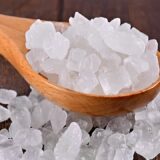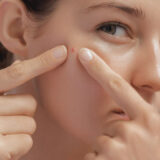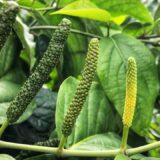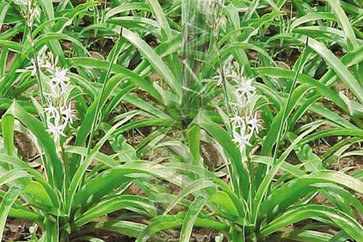What Is Oil Pulling? Benefits and How This Treatment Works
Oil pulling, also known as oil swishing, is a traditional oral health practice that dates back to around 5000 BCE. Its methods and benefits are detailed in ancient Ayurvedic texts, particularly the Charaka Samhita.  This classic piece of literature outlines how oil pulling can help prevent tooth decay, bleeding gums, and oral issues like dry throat, cracked lips, and halitosis (bad breath), while also strengthening the teeth and jaws.
This classic piece of literature outlines how oil pulling can help prevent tooth decay, bleeding gums, and oral issues like dry throat, cracked lips, and halitosis (bad breath), while also strengthening the teeth and jaws.
Originating in ancient Indian medicine, oil pulling remains a popular natural remedy today. The practice involves swishing edible oils—such as sesame, sunflower, coconut, or olive oil—in the mouth to support oral hygiene and manage conditions like gingivitis, tooth decay, dry mouth (xerostomia), and bad breath.
Among these, sesame oil is most commonly used due to its pleasant taste, rich nutritional profile, and numerous health benefits.
Ayurvedic View on Oral Health
Ayurveda — the ancient Indian system of medicine — offers a deeply holistic approach to oral health, rooted in timeless practices and natural healing. Detailed procedures for dental care have been documented in foundational texts such as the Charaka Samhita and Sushruta Samhita.
1. Understanding Oral Diseases in Ayurveda
According to Ayurveda, particularly the branches of Shalyatantra (surgical science) and Shalakyatantra (ENT and dentistry), there are 65 types of oral diseases, which arise from imbalances in the body and can manifest in seven anatomical locations:
- Lips: 8 types of diseases
- Alveolar Ridge (gums): 15 types
- Teeth: 8 types
- Tongue: 5 types
- Palate: 9 types
- Oropharynx (throat): 17 types
- Generalized oral issues: 3 types
Each of these is described with detailed symptoms, causes, and personalized treatment approaches based on Ayurvedic philosophy.
2. Swasthya Tapir: Ayurvedic Dental Health
In Ayurveda, dental and oral health care is traditionally known as “Swasthya Tapir” — a Sanskrit term reflecting the importance of maintaining balanced oral hygiene as part of overall health.
Ayurveda emphasizes individualized care, which is determined by a person’s Prakriti — their unique physical and mental constitution. This approach takes into account:
- Dominant Doshas (Vata, Pitta, Kapha)
- Seasonal and climatic changes
- Influence of solar and lunar cycles
- Diet, digestion, and lifestyle
Health care, including oral treatments, is tailored to each individual based on these factors to maintain balance and prevent disease.
3. Dosha Imbalance and Oral Health
- Vata imbalance may lead to dryness, receding gums, and tooth mobility.
- Pitta imbalance can cause inflammation, bleeding gums, ulcers, and bad breath.
- Kapha imbalance may result in excess mucus, plaque, heaviness in gums, and swelling.
Understanding the role of these doshas helps in selecting appropriate herbs, oils, and procedures for dental care.
Key Ayurvedic Oral Care Practices
1. Oil Pulling (Gandusha / Kavala)
A centuries-old practice, oil pulling is used to cleanse the oral cavity and prevent conditions like tooth decay, bleeding gums, bad breath, dry throat, cracked lips, and to strengthen teeth, gums, and jaw.
Common oils used: Coconut oil, Sesame oil, Sunflower oil
Tip: Best done on an empty stomach, early in the morning for 5–10 minutes.
2. Brushing (Danta Dhavana)
Ayurveda recommends brushing with herbal twigs rather than synthetic brushes.
However, brushing is contraindicated in certain conditions such as:
- Indigestion
- Fever
- Mouth ulcers
- Cough, asthma, or those prone to vomiting
In such cases, oil pulling is a gentler and safer alternative.
Various Gum Diseases Described In Ayurveda
Ayurveda, through classical texts like the Sushruta Samhita and Ashtanga Hridaya, describes a detailed classification of oral and gum-related diseases. These conditions are rooted in doshic imbalances (Vata, Pitta, Kapha) and are reflective of both localized and systemic disorders.
Below is a list of Ayurvedic gum/dental diseases with their modern equivalents and brief explanations:
1. Sheethada
- Modern Equivalent: Scurvy, Gingivitis
- Description: Characterized by bleeding, swollen, and spongy gums. Often due to poor oral hygiene or vitamin C deficiency. Related to Pitta and Rakta vitiation.
2. Dantha Pupputaka
- Modern Equivalent: Gingival Abscess, Periapical Abscess
- Description: Localized accumulation of pus due to infection at the root or in the surrounding gum tissue.
3. Dantha Vestaka
- Modern Equivalent: Periodontal Abscess
- Description: A deeper infection within the periodontal pockets, causing severe gum swelling, pain, and pus discharge.
4. Upakusha
- Modern Equivalent: Periodontitis
- Description: Chronic gum disease involving inflammation, deep pocketing, and loosening of teeth due to bone loss.
5. Dantha Vydarbha
- Modern Equivalent: Allergic Gingivitis
- Description: Inflammatory response in the gums caused by allergens or irritants, leading to redness, swelling, and discomfort.
6. Vardana
- Modern Equivalent: Supernumerary Tooth
- Description: An extra or abnormal number of teeth, potentially leading to misalignment or eruption issues.
7. Adhimamsa
- Modern Equivalent: Pericoronitis
- Description: Inflammation of the soft tissue around a partially erupted tooth, usually a wisdom tooth.
8. Saushira
- Modern Equivalent: Alveolar Bone Resorption or Tooth Loosening (Anug)
- Description: Loosening of teeth due to bone degradation or chronic gum disease. Associated with Vata imbalance.
9. Mahashushira
- Modern Equivalent: Cancrum Oris (Noma)
- Description: A rare, gangrenous infection of the mouth often seen in malnourished or immunocompromised individuals, leading to severe tissue destruction.
10. Paridhara
- Modern Equivalent: Possibly Gum Attachment Disorders or Supporting Tissue Weakness
- Description: Not extensively described in available texts; likely refers to weak gingival attachment or support structures.
Dantha Nadi (Dental Sinus/Fistula) – Based on Dosha
Dantha Nadi refers to chronic sinus tracts or fistulae around the teeth, typically arising from deep-seated infections. Ayurveda classifies these based on the predominant dosha involved:
11. Vataj Dantha Nadi
- Modern Equivalent: Dental sinus/fistula with dryness and pain
- Description: Caused by Vata dosha, characterized by dry, painful, and non-suppurative lesions with occasional discharge.
12. Pittaj Dantha Nadi
- Modern Equivalent: Infected fistula with heat and inflammation
- Description: Caused by Pitta dosha, involving heat, swelling, burning sensation, pus formation, and possibly bad odor.
13. Kaphaj Dantha Nadi
- Modern Equivalent: Chronic fistula with mucus-like discharge
- Description: Caused by Kapha dosha, usually with heavy swelling, thick discharge, and sluggish healing.
14. Sannipataja Dantha Nadi
- Modern Equivalent: Complex or mixed-type fistula (with Vata-Pitta-Kapha involvement)
- Description: A severe and chronic type involving all three doshas, often more difficult to treat and heal.
Ayurvedic Remedies for Common Dental Problems
1. Oil Pulling (Gandusha/Kavala)
- Problem Addressed: Bad breath, gum health, oral detox
- Remedy: Swish 1 tablespoon of warm sesame or coconut oil in your mouth for 10–15 minutes daily, then spit it out and rinse with warm water.
- Benefit: Removes toxins, strengthens gums, and reduces plaque.
2. Clove (Lavanga) for Toothache
- Problem Addressed: Toothache, minor infections
- Remedy: Apply clove oil directly to the affected tooth or chew a whole clove gently.
- Benefit: Natural analgesic and antibacterial properties.
3. Neem (Azadirachta indica)
- Problem Addressed: Gum disease, plaque, bad breath
- Remedy: Use neem twigs as a toothbrush or rinse with neem decoction.
- Benefit: Antibacterial, antifungal, and helps maintain oral hygiene.
4. Licorice Root (Yashtimadhu)
- Problem Addressed: Tooth decay, mouth ulcers
- Remedy: Use licorice powder in a herbal tooth powder or chew on the root.
- Benefit: Anti-inflammatory and antimicrobial effects.
5. Triphala Mouthwash
- Problem Addressed: Bleeding gums, oral ulcers
- Remedy: Boil 1 tsp Triphala powder in water, strain, and use as a mouth rinse twice daily.
- Benefit: Tones gums, heals tissues, and reduces inflammation.
6. Salt + Mustard Oil for Gum Massage
- Problem Addressed: Gingivitis, weak gums
- Remedy: Mix a pinch of salt in mustard oil and gently massage onto the gums.
- Benefit: Strengthens gums, reduces swelling and bleeding.
7. Turmeric Paste
- Problem Addressed: Inflammation, infection
- Remedy: Mix turmeric powder with water or coconut oil to form a paste. Apply to inflamed areas.
- Benefit: Powerful anti-inflammatory and antibacterial action.
8. Babool Bark Powder
- Problem Addressed: Loose teeth, gum disorders
- Remedy: Use as a tooth powder or boil bark in water to use as mouth rinse.
- Benefit: Strengthens teeth and gums, treats pyorrhea.
9. Guava Leaves
- Problem Addressed: Tooth pain, gum swelling
- Remedy: Chew fresh guava leaves or boil and use as a rinse.
- Benefit: Antimicrobial and anti-inflammatory properties.
10. Holy Basil (Tulsi)
- Problem Addressed: Mouth infections, bad breath
- Remedy: Dry tulsi leaves, grind into powder, and use as tooth powder.
- Benefit: Purifies the mouth and helps prevent bacteria build-up.
Ways to Take Care of Dental Health – The Ayurvedic Way
Ayurveda offers a holistic approach to dental and oral care, focusing on prevention, daily routines, and the use of natural substances to maintain optimal oral hygiene. In addition to modern procedures like extractions or surgeries, Ayurveda strongly emphasizes daily self-care rituals to preserve oral health and prevent disease.
Here are the key Ayurvedic practices for daily dental care:
1. Brushing (Danta Dhavana)
Ayurveda recommends chewing and brushing with herbal sticks, especially in the morning and after meals, to prevent oral diseases.
- Stick Size & Texture: The ideal chewing stick should be about 9 inches long, finger-thick, and from a fresh plant.
- Flavors & Properties: The herbs should be “tikta” (bitter), “katu” (pungent), or “kashaya” (astringent) in nature — known for their cleansing and antimicrobial effects.
- Usage: One end of the stick is crushed to make it brush-like, and the teeth are cleaned by chewing and brushing gradually.
- Ayurvedic Tip: Always choose fresh twigs from medicinal plants for maximum potency and antibacterial benefits.
Recommended Plants for Brushing:
- Neem (Azadirachta indica)
- Licorice (Glycyrrhiza glabra)
- Catechu Tree (Acacia catechu)
- Arjuna Tree (Terminalia arjuna)
- Nut Fever Plant (Caesalpinia bonduc)
- Milkweed Plant (Calotropis procera)
2. Tongue Scraping (Jivha Lekhana)
Scraping the tongue is a vital daily ritual to eliminate toxins (Ama), improve oral hygiene, and stimulate digestion.
- Preferred Materials: Ayurveda recommends copper, silver, or gold tongue scrapers for their antimicrobial and energetic properties.
- Benefits: Removes odor-causing bacteria, improves taste perception, and stimulates digestive enzymes by activating tongue reflex points.
- Scientific Insight: The tongue hosts over 500 types of bacteria — regular scraping significantly reduces anaerobic bacteria and halitosis.
- Extra Tip: Scraping should be done gently every morning before brushing to avoid harming the soft tissue.
3. Gargling / Oil Pulling (Gandusha or Kavala)
This ancient detox method involves swishing oil in the mouth to cleanse oral tissues and remove toxins.
- Gandusha: The mouth is completely filled with oil (like coconut or sesame) and held for 3–5 minutes without movement, then released.
- Kavala: A comfortable amount of oil is swished and gargled for a few minutes, promoting deep cleaning and massage of oral tissues.
- Benefits: Strengthens teeth, gums, and jaw; detoxifies the mouth; freshens breath; and supports systemic health.
- Pro Tip: Use warm oil in the morning on an empty stomach for best results and enhanced detoxification.
4. Tissue Regeneration (Asthi Dhatu Support)
Ayurveda also focuses on strengthening the deeper tissues that support oral health — particularly bones (Asthi Dhatu) and gums.
- Collagen Boost: Herbs like Cranberry and Hawthorn Fruit help in collagen production, aiding gum tissue repair.
- Bone Strengthening: Alfalfa Leaf, Turmeric Root, and Cinnamon Bark are excellent for fortifying bones and joints — which support dental integrity.
- Overall Oral Health: Herbs like Amla (Amalaki) promote rejuvenation and tissue regeneration throughout the oral cavity.
- Ayurvedic Insight: Strong Asthi Dhatu (bone tissue) means long-term dental stability — nourish it through diet and herbs regularly.
Benefits of Oil Pulling in Ayurveda
Oil pulling is more than just a trend — it’s an Ayurvedic powerhouse that purifies the mouth, detoxifies the body, and strengthens overall health. Here’s how it works its magic, especially when done with coconut oil:
1. Prevents Cavities: Swishing oil helps eliminate bacteria hiding between the teeth and gums, reducing plaque buildup and preventing tooth decay.
- Tip: Do it first thing in the morning, before brushing, to remove overnight bacterial growth.
2. Kills Bad Breath: Coconut oil pulls toxins and odor-causing bacteria from the mouth, giving you naturally fresh breath.
- Ayurvedic Insight: Bad breath (halitosis) is often linked to excess Ama (toxins) in Ayurveda — oil pulling targets this directly.
3. Reduces Gingivitis: The natural cleansing effect reaches gum pockets, reducing inflammation and harmful bacteria that cause gum bleeding and swelling.
- Tip: Use gentle, circular swishing — avoid vigorous motion to protect sensitive gums.
4. Prevents Heart Disease: Oral bacteria can enter the bloodstream and trigger arterial plaque, increasing the risk of heart conditions.
- Extra Insight: Studies show a clear link between gum disease and cardiovascular health — healthy mouth, healthier heart.
5. Detoxifies the Body: Your mouth is a gateway for toxins; reducing bacterial load supports overall detoxification.
- Ayurvedic View: Oil pulling is a form of daily Dinacharya (self-care routine) to cleanse and balance the body.
6. Boosts the Immune System: Coconut oil’s vitamin A and fatty acids help reduce toxic burden and strengthen immune response.
- Tip: Combine oil pulling with tongue scraping for maximum immune-supporting benefits.
7. Soothes a Dry Throat: Its lubricating effect relaxes irritated throat tissues and keeps the mouth moist.
- Practical Tip: Especially helpful during seasonal transitions or for people who snore or breathe through the mouth at night.
8. Increases Energy: By reducing toxins, the immune system can work more efficiently — leaving you feeling lighter and more energized.
- Mind-Body Link: A cleaner mouth leads to a clearer mind and more balanced Prana (life energy).
9. Heals Cracked Lips: Coconut oil nourishes lips with fat-soluble vitamins, keeping them hydrated and soft.
- Extra Tip: After pulling, you can apply a bit of the same oil to your lips as a natural balm.
10. Reduces Acne: Clearing oral toxins can help reduce breakouts and promote clearer, brighter skin.
- Ayurvedic Perspective: Acne often stems from Pitta imbalance and toxin buildup — oil pulling helps address both.
11. Relieves Headaches: Toxins contribute to headaches and tension — pulling helps flush them out and ease discomfort.
- Tip: Practice consistently for a few weeks to notice a reduction in headache frequency and intensity.
Final Thought: Oral issues like oral cancer, cavities, and gum disease are becoming increasingly common due to modern habits and neglect of oral hygiene. Ayurvedic practices like oil pulling can restore balance, prevent disease, and support overall vitality.
Oil pulling is a time-tested practice rooted in ancient Ayurvedic wisdom, offering a natural way to support oral hygiene and overall wellness. With its simple method and the use of easily available oils, it remains a safe and holistic addition to modern dental care.


























Oil pulling is also known to remove bacteria in the mouth which would otherwise enter your bloodstream or be swallowed, hence reducing the overall toxin level in the body. In this way, your body can cope better with Candida toxins.
Nice post, things explained in details. Thank You.
Enjoyed reading oil pulling article got some interesting knowledge about it and its benefits.